Openreach UK Trials New Approach to FTTP Broadband Installs
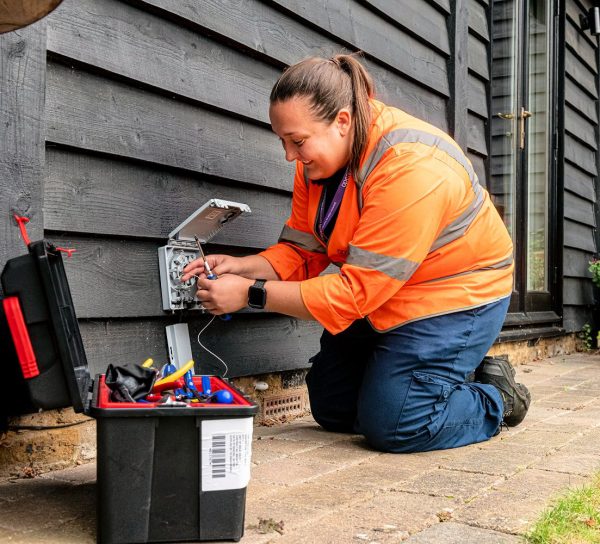
Openreach (BT) this week announced the launch of a new ‘Build to the Wall‘ (BTTW) trial for UK ISPs selling their gigabit-capable Fibre-to-the-Premises (FTTP) broadband network, which could increase the success rate of new provisions to homes by changing how they approach the final drop to homes.
As usual, the public briefing on this trial doesn’t say anything even remotely useful, and so we had to do some digging through the industry in order to try and figure out what Openreach were actually doing.
During a normal FTTP installation the fibre will typically be run from a Connectorised Block Terminal (CBT) on a pole (overground), or Toby Box in the pavement (underground), and taken to the external wall of your house. The fibre then gets drilled through to the inside wall, where it is connected up to their Optical Network Terminal (ONT) and that in turn is linked to your broadband router. Some final tests are then made.
Advertisement
Admittedly, the above explanation is a simplification of all that’s actually involved and sometimes tackling the final drop doesn’t go quite so smoothly, which may require further visits to remedy. So far as we can tell, the new trial seeks to improve the success rate for installs and thus the overall customer experience, partly by streamlining the process through two separate visits (this can already occur, but OR are going further).
The first visit would essentially focus on the outside work, such as taking the new fibre to the customer’s wall or Customer Splicing Point (CSP). The engineer will also test for the right optical light reading at the CSP to ensure success on the appointment date that has been booked (homeowners often won’t need to be present for the first visit). After that another appointment will be made for the in-home installation, which would see an engineer take the fibre inside and setup the ONT, router etc.
This seems to us like an approach that could increase the cost of service delivery for Openreach, although much may depend upon how much it impacts that crucial success rate. But as we understand it, Openreach may be seeking to combine this trial with new ways of working internally (i.e. increasing job density in geographical areas with multi-skilled teams).
Put another way, fewer engineers completing more jobs in a single day. In other words, if both trials are successful then their FTTP provisioning success rate would increase, while additional costs could be mitigated through greater efficiency. The trial will of course seek to test all of this, and to understand any resources/process implications for delivery.
Advertisement
Openreach have since informed us that the trial will run for 4 weeks, starting on 23rd August 2021, and will target around 600 residential orders. The two trial locations will be in Lancs & Merseyside and Manchester (Openreach will decide which). The trial is widely supported by ISPs.
Mark is a professional technology writer, IT consultant and computer engineer from Dorset (England), he also founded ISPreview in 1999 and enjoys analysing the latest telecoms and broadband developments. Find me on X (Twitter), Mastodon, Facebook, BlueSky, Threads.net and Linkedin.
« O2 UK Launch Slightly Refreshed Pay As You Go Mobile Tariffs





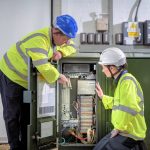
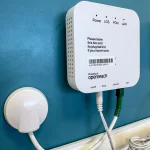
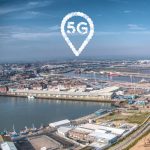
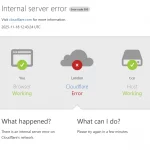
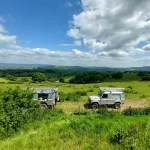











































I had FTTP from BT installed a couple of months ago and I had two visits which followed this pattern. It worked really well although I was asked to be in for both appointments, not a massive inconvenience for me as I work from home. But, if people don’t work from home and have to be at home for both appointments and don’t work from home or have the option of working from home it may not be so well received if, like me the appointments are on different days.
why? i worked for BT during its transition to Openreach for 13 years,completing over 10,000 Installation’s…overhead and underground commercial residential ect,occasionally on a more complex Installation you might need assistance…hoist/tricky road crossings or other installation issues ect,but probably 95% + where completed on the day in one visit,its better to do a pre installation survey…takes 5 minutes,you dont need to bother the end user then make one visit.
@Neil. Strictly speaking, on the first visit, they wouldn’t need you to stay home as they’d never enter the premises. An exception might be if an existing cable duct is blocked, and they need to run a new route etc.
Well that is interesting.
So the poor job rate on completed jobs only engineers of this world will be doing only half the job from now on. and get less than £25 a job instead of £45 for a full fttp provide.
We are going to lose even more engineers from telecoms with this great plan.
Remember only actual BT openreach engineers are on salaries whilst most of the work done by the others (Kelly etc) do not.
Another step backwards for the abused Telecoms Engineers on job rate
Strange. I have an install aug. 4th in MK and openreach seem to be taking this exact approach. Theres already a spool of shotgun fibre sitting outside waiting for the internal connect in s couple of weeks. I thought this was normal?
There is flexibility to allow this already, but the new trial is perhaps more about taking a wider, streamlined approach to such things.
I don’t like the fact you don’t need to be there for the first install. When I I had VM installed (they take this approach) I specifically gave VM instructions for the engineer to contact me as I needed the CSP in a specific place. This message was not passed on, he initially installed the CSP on the front of my porch, luckily he found my note in the Toby and called me, he then installed it where it needed to go, out of sight and next to my cable entry point. My brother is having FTTP installed in a couple of weeks, his CSP needs to go in a specific location, how’s the engineer supposed to know where if they turn up unanouced or don’t get the information from the CP? Luckily he works from home. There must be a large proportion of customers that have a preferred location either due to aesthetics or for the best internal connection, customers really need to be consulted.
This often happens however the location of the CSP is not necessarily next to the entry point, I’ve worked for VM previously and now Openreach. Both the ONU (vm which is outside in a box) and the CSP (Openreach) can be located where you prefer, if you would like it in a specific location you can request at the time of booking when they confirm your order that you would like a survey visit for both companies who wi send an engineer/technician around to answer any questions you may have pertaining to the install and cable routings etc, who will then add this to the notes and in some instances fit the box on the wall for you there and then so the next engineer visit will look at the notes and locate the existing csp/box, all you need to do is ask. I will say its not down to the engineer to be a mind reader and guess what the customer wants, if you have specific needs/requirements then please just say. Just like when the engineer is in your home installing the services you will have an idea of where you would like it, and would relay that to them.
I will acknowledge it is slightly inconvenient though. What’s more inconvenient is being give a date and time slot for the step 1 visit for the partner engineer to not show at all and then leave you scratching your head as to why they haven’t turned up or got in contact. Which happened to me, luckily I was able to speak to the partner company and get an answer as to why, which left me to complete my installation over the weekend.
Openreach have in their quality documents stated that the CSP should be put in above the duct mouth and directly above the capping that protects the cable when it comes out of the ground. The cable that then leads out to go into the property can be brought to wherever you want it. If an engineer puts the CSP anywhere else they are leaving themselves open to having to return to re run the cable and move it to above the duct mouth. I know I have had to do it. When the 2 step jobs are issued out the guys doing the step one will as per the Openreach quality documents install the CSP above the duct mouth.
That’s exactly how our install went, the first part the installer turned up announced, explained what was going to happen, a couple of day later a OR engineer arrived and did the final bit, it was really smooth, about an out after the visit the service went live, a really positive experience.
Just seems they are reverting to how it used to done with a bit of variation. My installation 18 months ago was two visits, first was to take the fibre from the CBT underground up and out of the ducting at my property (same route as the telephone cable) and customer splicing points (CSP) were not used routinely at this time so a long coil of fibre was left outside. Second visit saw them pull the fibre into the house, cut of the excess, strip it back and install the ONT. Now they have the CSP rather than a coil of fibre. This install makes sense as you can use engineers better skilled and equipped to rope and pull or do overhead runs of fibre, then later an engineer better skilled and equipped at splicing and installing/setting up the ONT comes along. These second engineers can have smaller vans and they remain ‘clean’ for coming inside peoples home and for dealing with sensitive splicing equipment and the fibre.
Hopefully this approach will resolve some of the major issues we’ve seen around here with installs going wrong. Fibre first underground area and in theory all the houses were rodded and roped as part of the main build.
However Openreach either didn’t get or didn’t take notice of where contractor didn’t succeed. So 1 step installs failed due to blockages, incorrect duct records etc. Big issue here is the process with ISPs which resulted in old ISP (if migration) or FTTC (if upgrade) being cut off on day of failed install. Lots of unhappy people with no broadband for weeks whilst OR fixed issues.
Hopefully the two step process will fix that pain point.
I also noticed most of the time they needed two engineers to pull the fibre through, but then only one for the in-house install part, so might help with efficiency too.
At the moment Openreach will assign an installation as 1 stage (where all the external and internal work is done on the same visit or 2 stage (where external work is completed before the internal visit). 1 stage installs tend to be when the customer is feed over head or existing ducting is identified. When a 2 stage install is required this is when dig works are needed to complete the install. However a lot of the time on 1 stage installs the engineers identify an unknown issue such as no line plant after the DP, line of sight issues such as trees, damaged or dangerous poles or block ducts which causes a delay and inconvenience to the customer. Changing all orders to this 2 stage approach would have a positive impact on the order journey. As any issues would be identified on the 1st visit and planning could then be arranged to resolve the issues. This would also prevent a premature disconnection if the customer is switching service providers as when going from Copper ADSL/FTTC and switching services providers this can sometimes disconnect the customers services before the engineer arrives leaving the customer with only a phone service and no broadband.
Level 1 is external only. They either leave a cable spooled up outside or do a proper job and mount a CSP too.
Level 2 is the whole thing done in one go internal and external.
Also you do not get to dictate where the CSP goes but you can ask.
You have no freedom if it’s UG (underground) fed but if OH (overhead) fed you do have some say.
This approach also assists with high volumes of DSL to FTTP switching which may occur once word gets around FTTP is available in the street. The Stage One jobs can be consolidated where possible by DP even to the the extent that if OR are the only network provider likely they could pre-prepare Stage One to all premises (with live OR broadband service) if copper closure is imminent. Giving ISPs scheduled conversion dates, shorter lead times, multi operative working, retrospectively recovering the cost from ISP on the change and have fewer subsequent external engineering visits to recover old drop wires and re-engineer the pole. Openreach will have different approaches for different location types but consolidating skills/tasks/equipment also makes sense where the volumes exist.
When they put the FIRST customer on FTTP at my old scots tenement they installed enough fibres for all 16 flats to a box on the exterior wall. Couple years ago when I signed up all they needed to do was a short exterior run and a hole in my wall to pass it through and hook up the ONT, then plug up the correct fibre at the DP.
If they are serious about getting as many people on fibre as possible this sort of thinking will save them a huge amount of time in the long run, if be very happy for them to put the box on my house (using one of them fibre/copper cables) even if i didn’t have a service yet, i would imagine the fact its there would be a good selling point if i sold up at a later time.
wonder how much they spent on the thinktank who suggested it to them…….
My phone point comes into the house, then goes under the floor, and reappears the other side of the hall/living room, all under expensive laminated flooring, this is where the MK socket and a power socket are located.
The underfloor wiring was put in by the builders, who are muppets as they put handles on the bath, which to replace required de-plumbing the bath!!
If OR drill through the wall, they will reach the wall side of a very large expensive radiator in the living room, so I am a little confused as how they are going to route the fibre to the correct point, where the MK socket (no longer require) and the required power socket are.
Their are lots of ways to route a cable, sometimes compromise.
In your words “builders, who are muppets”
Stand back and think of alternative options, do the work for the installer, think of a river, it takes the line of least resistance.
I am minded that as your contributing here your more than qualified to work this out for yourself.
@Chris Sayers
If it was possible to draw the fibre to the current socket using the existing cable, would there be an issue with bends, how bendy is the fibre use within the premises?
As a UG fibre cabler I know I would not pull a fibre cable on an existing cable from what you have described. Reason being if I couldn’t get it there your existing cable is now useless and even if I did the fibre cables can be a bit fragile if there is any sharp turns.
To be honest, a 2 Stage install, is the approach they have been using lockdowns, for the past 12 months or so, so I would assume they have gained a lot of insight how this has improved things. It actually has worked very well and allowed for higher volume of orders to be processed, especially as has allowed 3rd party contractors to focus and get on externals, without impacting on activities elsewhere.
Ironically recently, as soon as they have gone back to the old ways of attempting to do everything on the same day, we have seen an increase in failures, repeat appointments and issues that were not seen prior to committed install dates.
The original trial areas were all 2 stage installs and it always struck me as a better use of resources.
“As usual, the public briefing on this trial doesn’t say anything even remotely useful”
🙂
I had a 2 stage install. First stage was not appointed. This visit would have failed if I was not in. The engineers needed me to unlock the door to my rear yard and to clear room for them to work. They then started to cable tie the drop cable to a waste pipe before I stopped them and asked for the cable to follow the route of the old copper drop wire and for for the new cable to be properly pinned to the wall. In my view you need to establish if stage 1 needs an appointment before sending engineers out. With records of early prep work clearly not properly logged the first visit is often finding things out that OR should know. In my case the pole used has a street light on it and the engineers had to stop work until a fibreglass ladder was found and brought to the job. Fiberglass ladders were in short supply due to the ones chosen cracking after exposure to sunlight on top of vans. Basically Openreach, pull your socks up and sort yourselves out.
Lady. Book yourself out a stool folding. Your knees and feet will not be able to do that for long
Hi – does any one know how the practical side of the ‘last mile’ is been managed for underground based installs ?
Do they schedule civals and if so would they deploy like a new cable area (ie streets up) ?
Not seen much on how they plan to tackle modernish areas like this on mass yet.
Terran
It depends on what is already in the ground, most new builds in the last 10 years will be fed by cable in ducts right to the outside of the house/property, stage 1 of an install is to check these are clear and not blocked/damaged. For areas where the cables were just buried in the ground these are mostly done as bigger projects, new duct is run to the boundary of every property and when someone orders FTTP engineers will come to dig up the garden/drive etc to run the last 5/10/50m etc
In regards to ‘last mile’ that normally means the last amount of copper to the property from a fibre feed cabinet.
For full fibre if you have an overhead feed that is the one that would most likely be used, if you have a UG feed then that one would be, if you have no feed then you would need to pay for one to be installed.
Forgive the ignorance guys, but is the external grey box an always necessary part of the installation?. I saw one on a neighbours wall and it sticks out like a sore thumb tbh. I think I wrongly assumed it was the ONT, and wondered at the time why he didn’t choose to have it on the inside (Doh!!).
Yes that box is standard for an OR install
This might be great but the vast majority still can’t get fttp not even VM!
When are they going to enable more street cabs or is the focus remaining exclusively on commercially viable areas only.
Fed up with broken calls when working from home because my fttc is a just 2.5.
Pathetic as always
Boring drivel.
@Anti-moaner
The ones who sat that already have FTTP Numb-Nut!
Fttp doesn’t run through cabs, it’s done entirely differently then the older FTTC which is termed as fibre to the cab and then copper for ‘the last mile’ speeds should be around 60-80 on this. As for installing FTTP as someone doing it, it will take time but is being done at quite a fast rate. Though it tends to be areas without FTTC that are a higher priority along with brand new building sites.
I had a 2-stage install like this for virgin media installing cable to my house a month ago.
I ordered FTTC on 2 Jan 22 and the stage 1 team arrived on 4th Jan. It took several engineers (OR) all day to get the fibre from the footway box to the house due to three problems
1. Footway box (did not house any kit – it is just the point where mine and the neighbours opposite cables turn to head to next box where the joints are made CBT). The first box was deep in mud and debris and took ages to clean out
2. The duct also contained a stout coaxial cable for a redundant cable TV system – in they end they pulled this out (about 160 Metres in total)
3 The duct enters the house from below direct into the cavity behind a neat integral hatch built flush into the facing bricks layer ( so no wiring visible externally) But the original installers had gone overboard with the gas seal which looked like expanded foam and extended for about a metre down to the bend in the duct. In the end they had to dig down to the horizontal duct and break into it there to get it clear.
To their credit they worked very hard and by the time they’d finished it was getting dark and they were filthy. Not a good time to start doing stage 2, which was in any case, booked separately for a later date.
It seems to me that the two stage approach is very sensible. The external works are the mostly likely to encounter unforeseen problems and if they do it is less likely to delay the go live date.
Fingers crossed